September 1969 lunar eclipse
A penumbral lunar eclipse took place on Thursday, September 25, 1969, the last of three penumbral lunar eclipses in 1969, the first being on Wednesday, April 2, and the second being on Wednesday, August 27. At maximum eclipse, 90% of the Moon's disc was partially shaded by the Earth, which caused a slight shadow gradient across its disc; this subtle effect may have been visible to careful observers. No part of the Moon was in complete shadow. The eclipse lasted 4 hours and 5 minutes overall.[1]
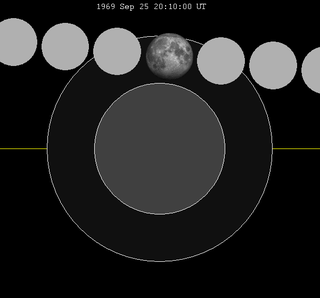
Visibility
It was completely visible over Europe, Africa, Asia and Australia.
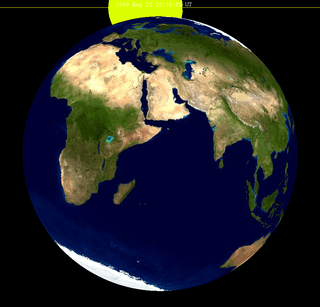
Related lunar eclipses
Lunar year series
| Descending node | Ascending node | |||||
|---|---|---|---|---|---|---|
| Saros | Date Viewing |
Type Chart |
Saros | Date Viewing |
Type Chart | |
| 111 | 1966 May 4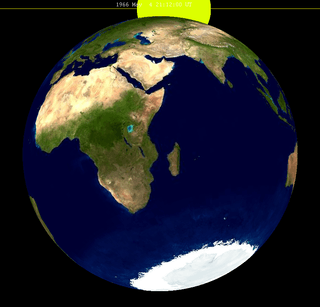 |
Penumbral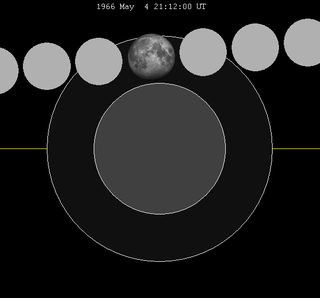 |
116 | 1966 Oct 29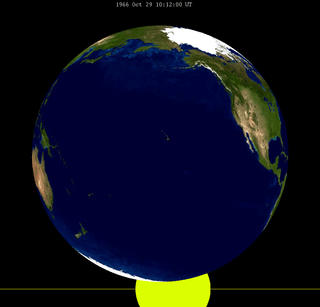 |
Penumbral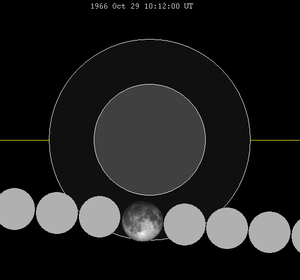 | |
| 121 | 1967 Apr 24 |
Total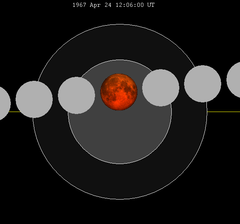 |
126 | 1967 Oct 18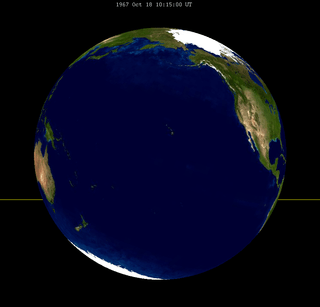 |
Total | |
| 131 | 1968 Apr 13 |
Total |
136 | 1968 Oct 6 |
Total | |
| 141 | 1969 Apr 2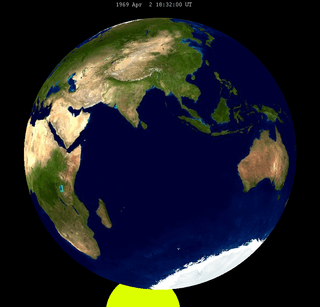 |
Penumbral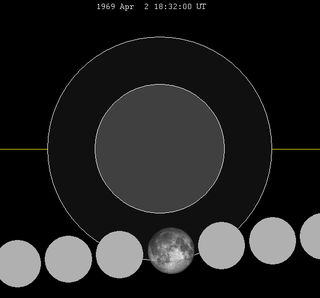 |
146 | 1969 Sep 25 |
Penumbral | |
| Last set | 1965 Jun 14 | Last set | 1965 Dec 8 | |||
| Next set | 1970 Feb 21 | Next set | 1969 Aug 27 | |||
Half-Saros cycle
A lunar eclipse will be preceded and followed by solar eclipses by 9 years and 5.5 days (a half saros).[2] This lunar eclipse is related to two partial solar eclipses of Solar Saros 153.
| September 20, 1960 | October 2, 1978 |
|---|---|
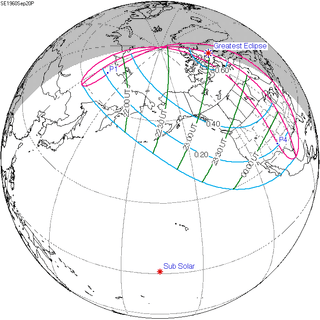 |
 |
See also
- List of lunar eclipses
- List of 20th-century lunar eclipses
Notes
- Hermit Eclipse: Saros cycle 146
- Mathematical Astronomy Morsels, Jean Meeus, p.110, Chapter 18, The half-saros